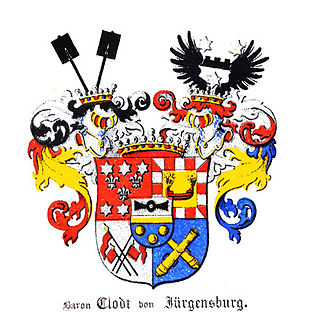Peter_Clodt_von_Jürgensburg
Peter Clodt von Jürgensburg
Russian sculptor
Peter Jakob Freiherr[lower-alpha 1] Clodt von Jürgensburg, known in Russian as Pyotr Karlovich Klodt (Russian: Пётр Карлович Клодт; 5 June 1805, Saint Petersburg – 25 November 1867, Klevenoye, Vyborg Governorate), was a favourite sculptor of Nicholas I of Russia.
This article needs additional citations for verification. (January 2021) |
You can help expand this article with text translated from the corresponding article in Russian. (September 2014) Click [show] for important translation instructions.
|

